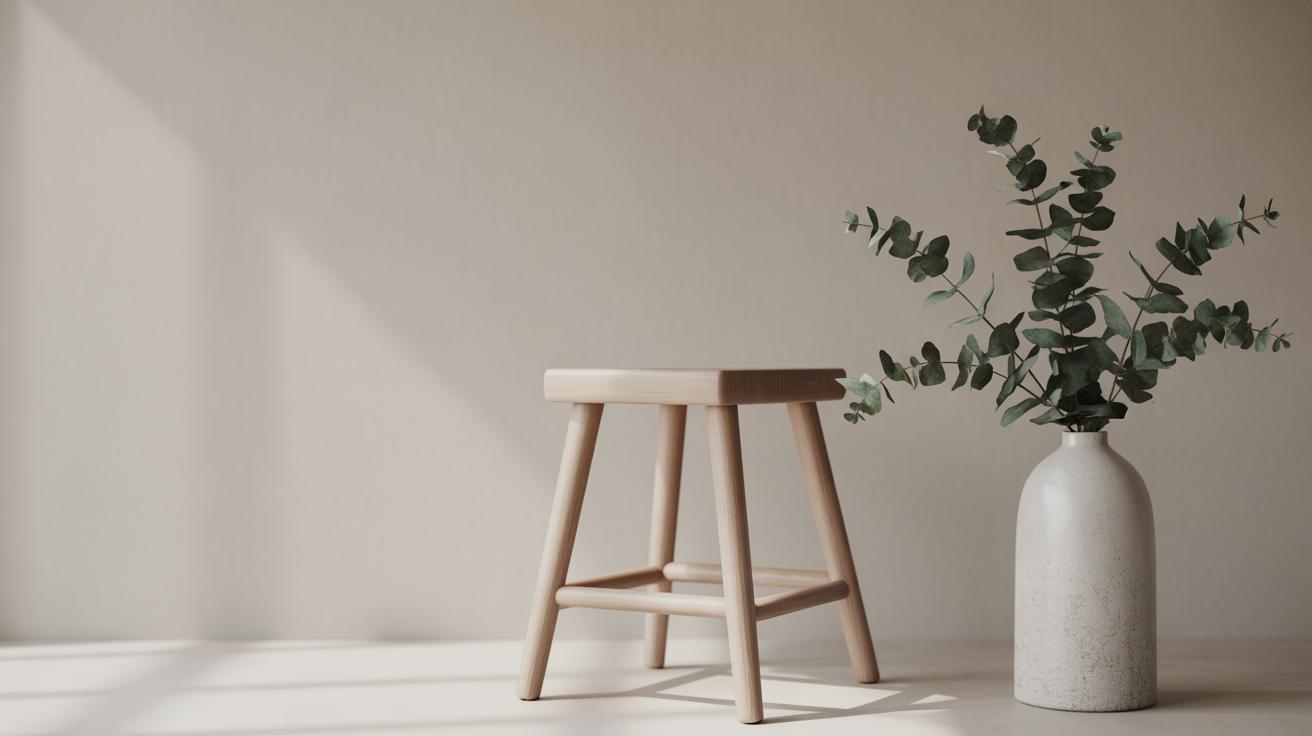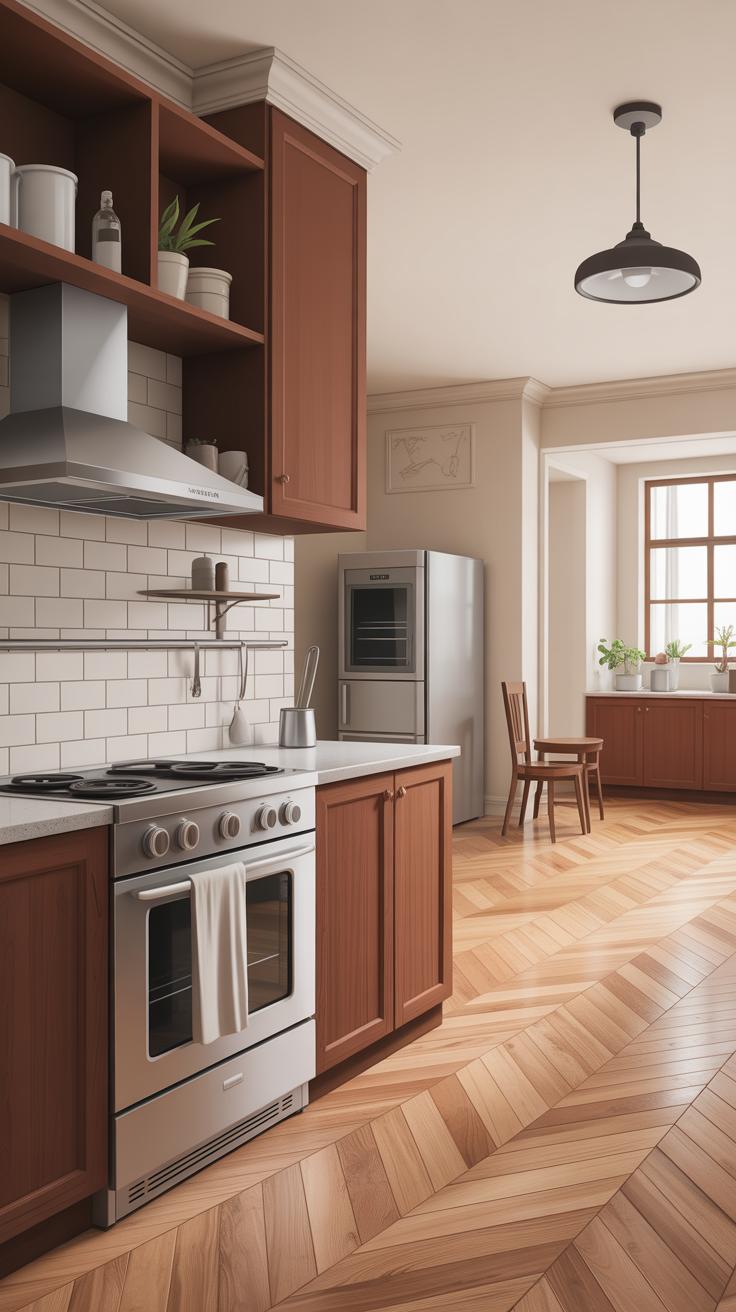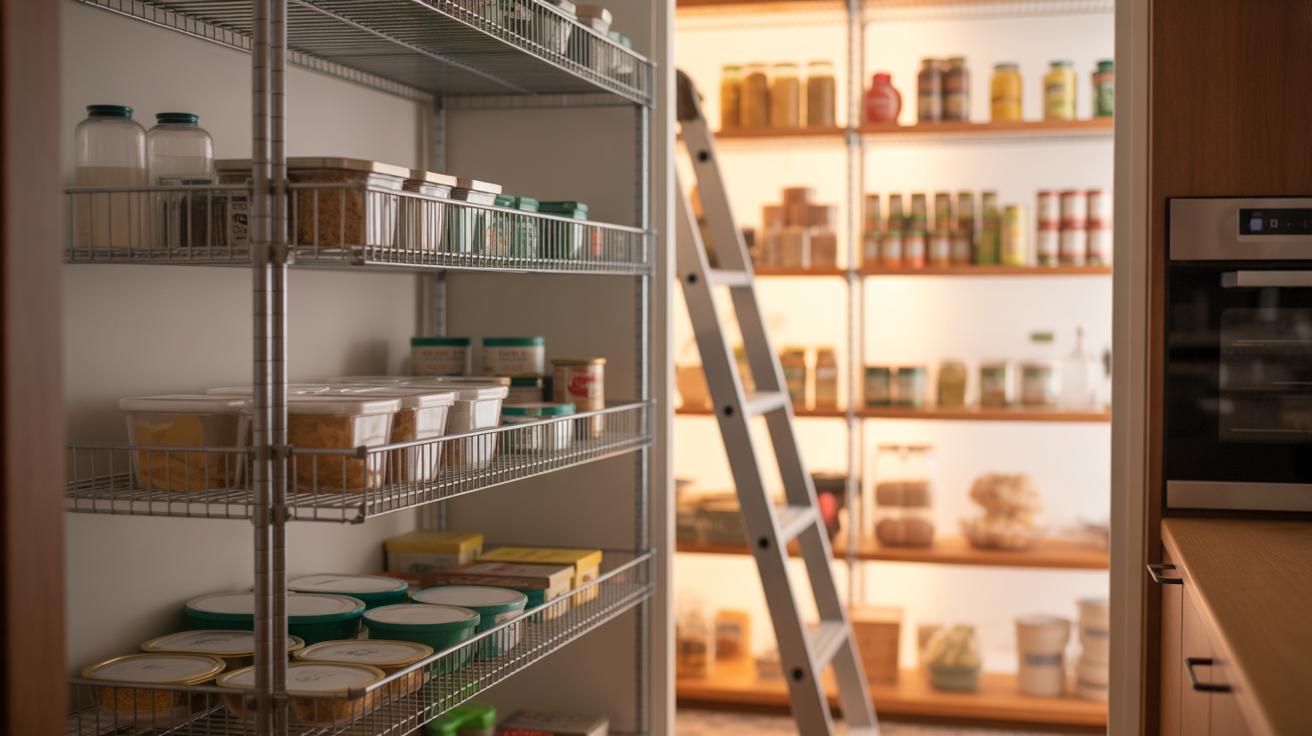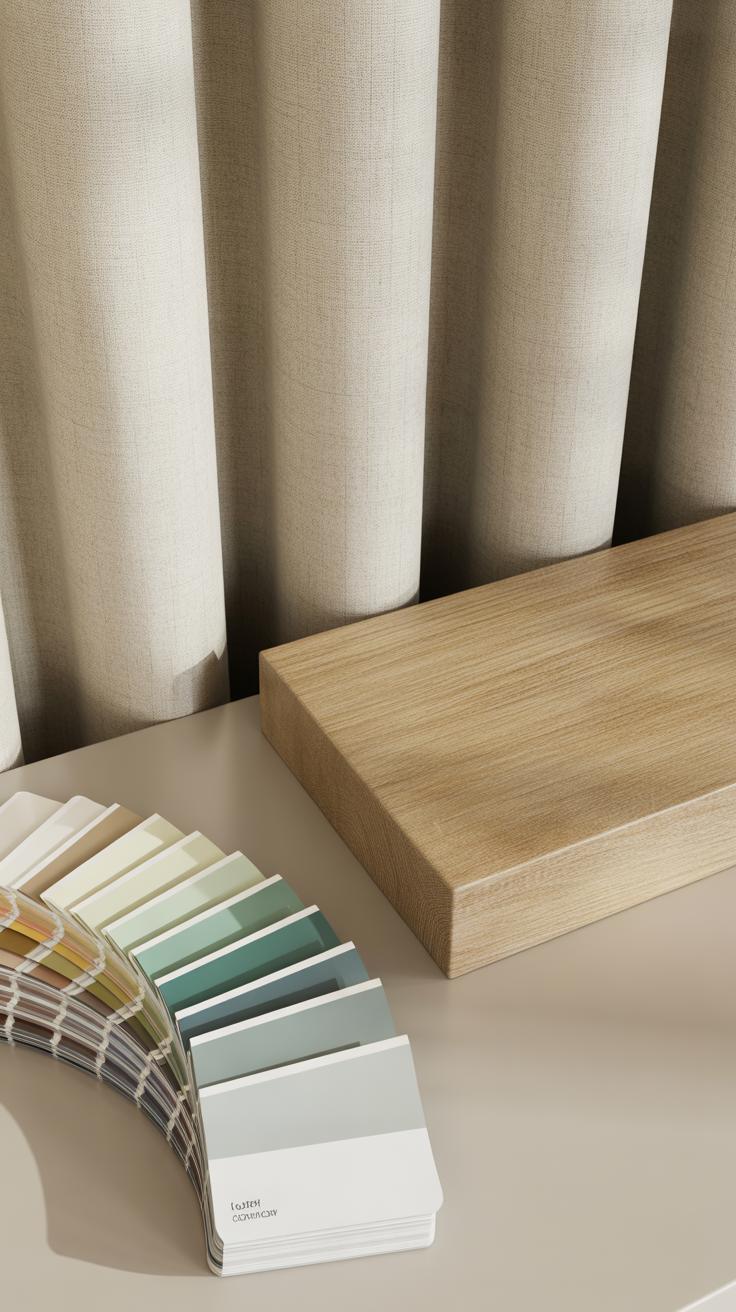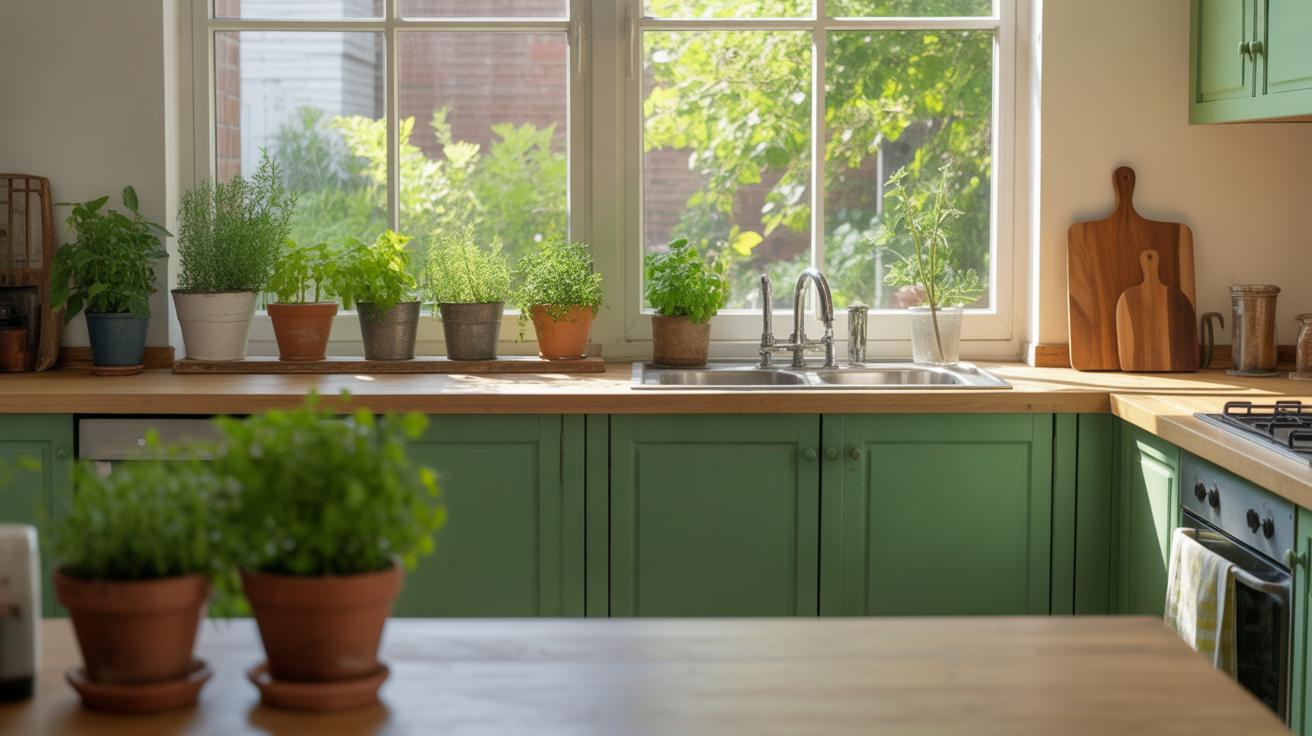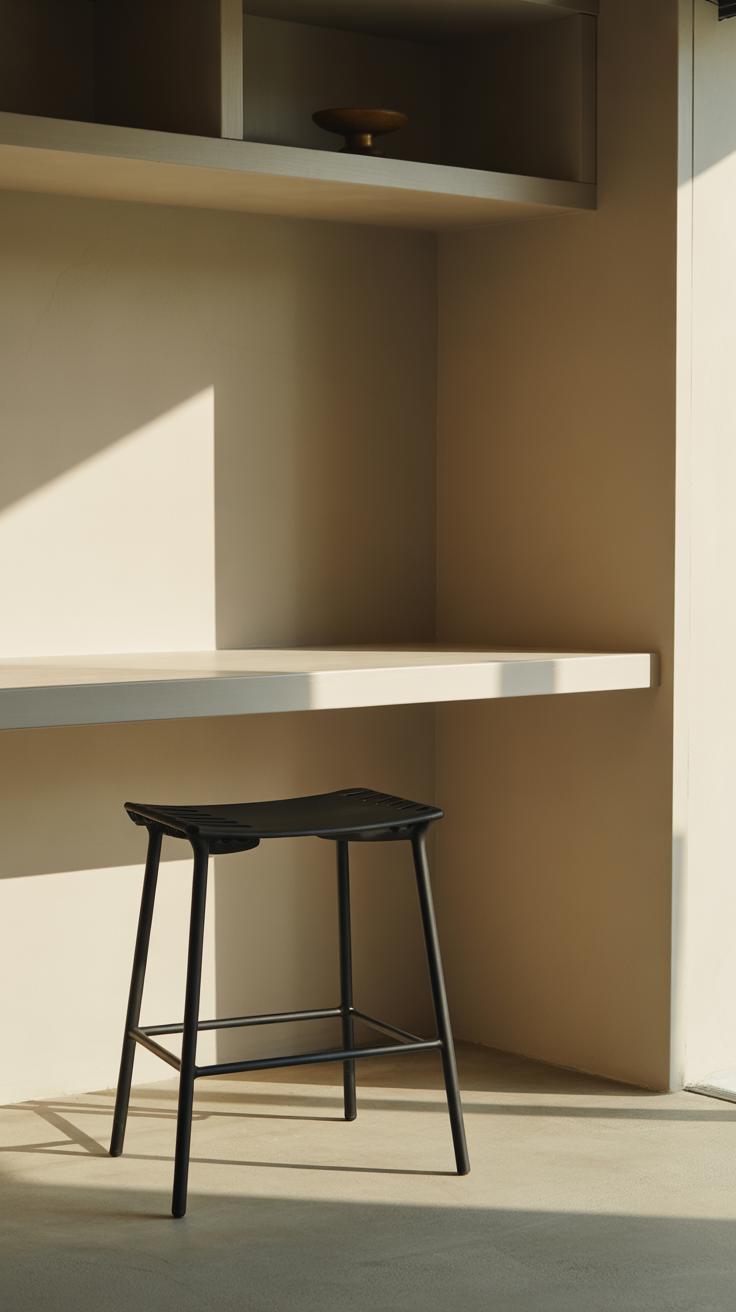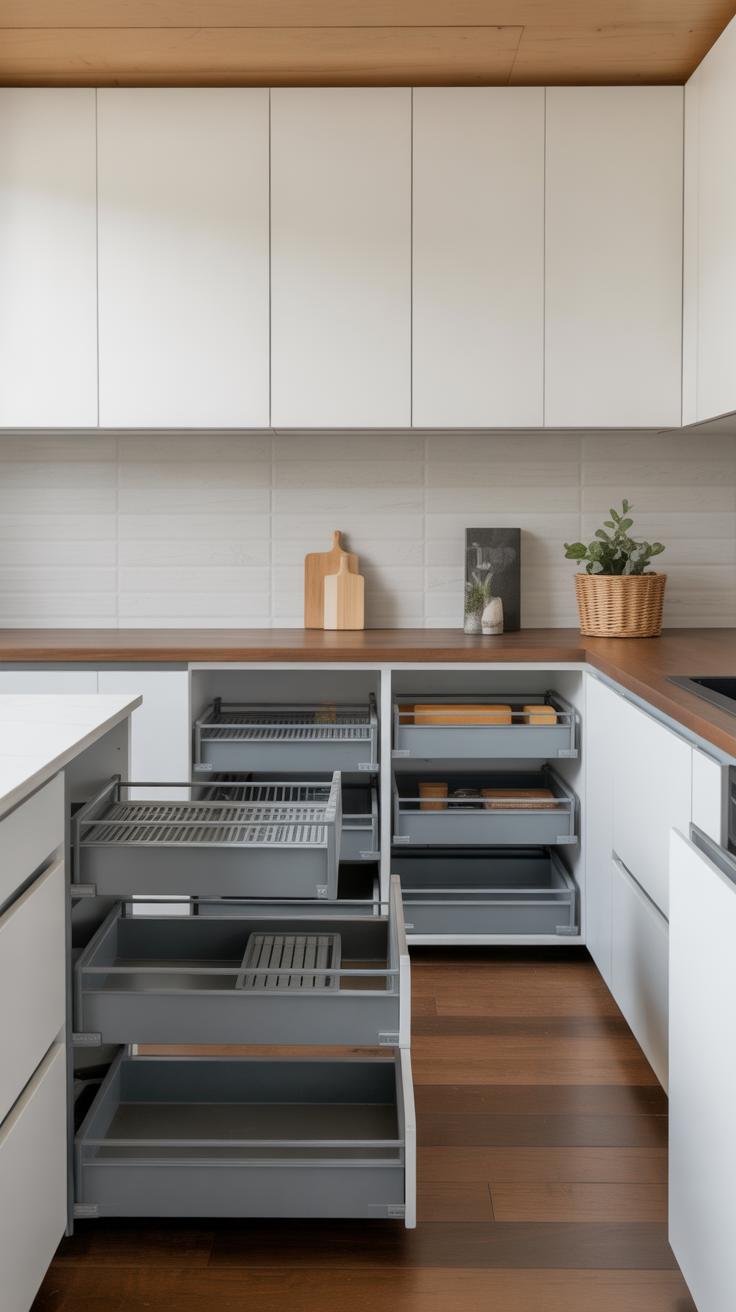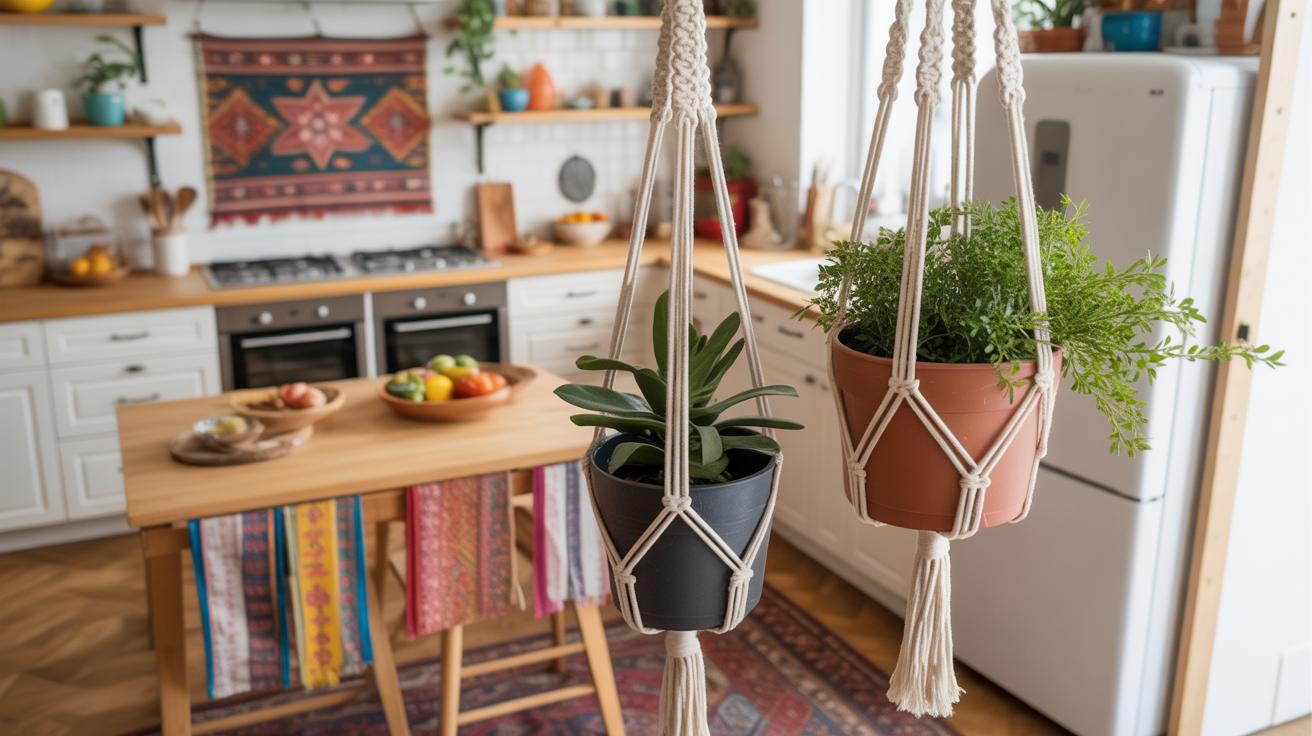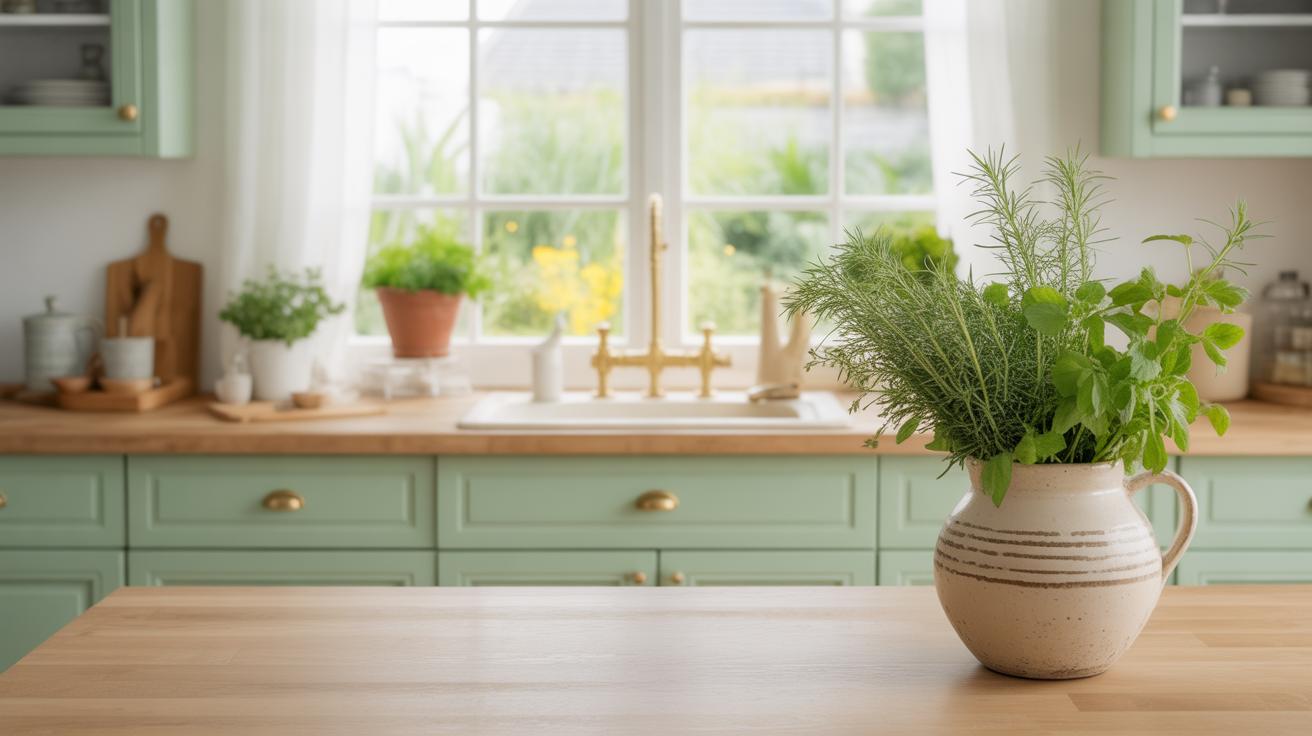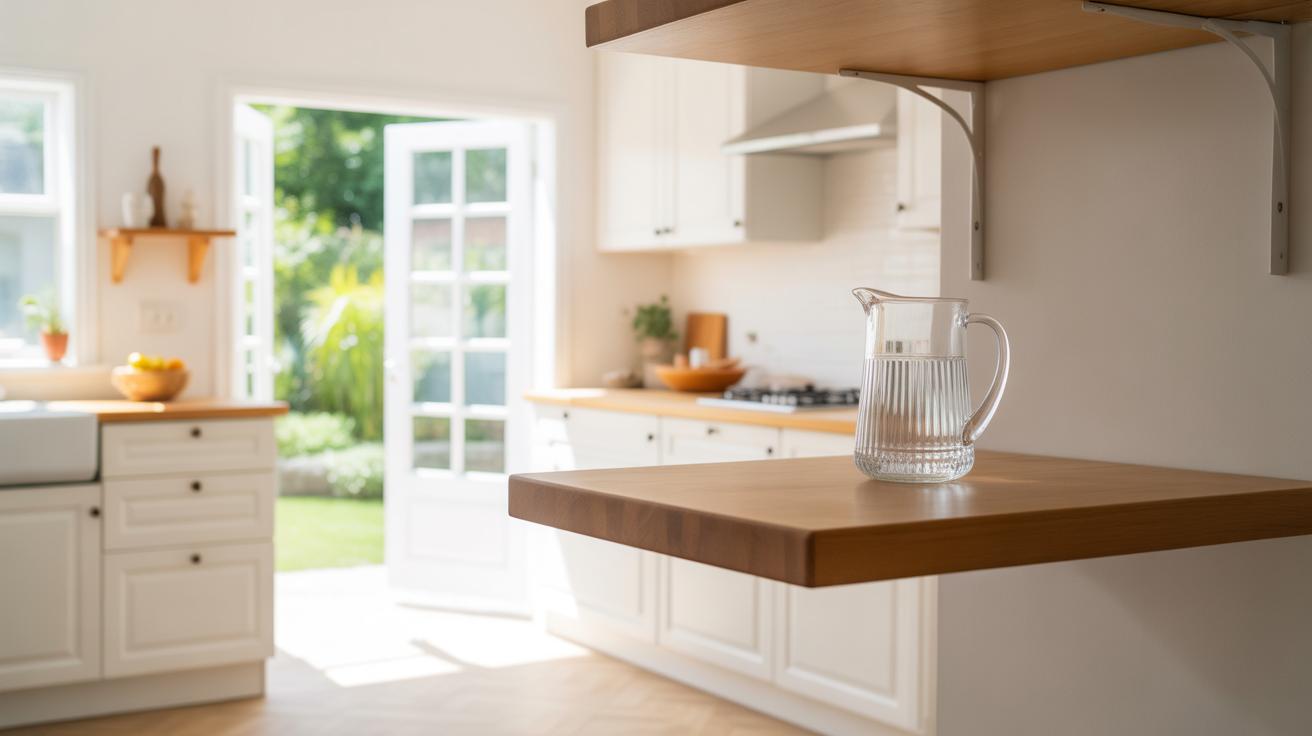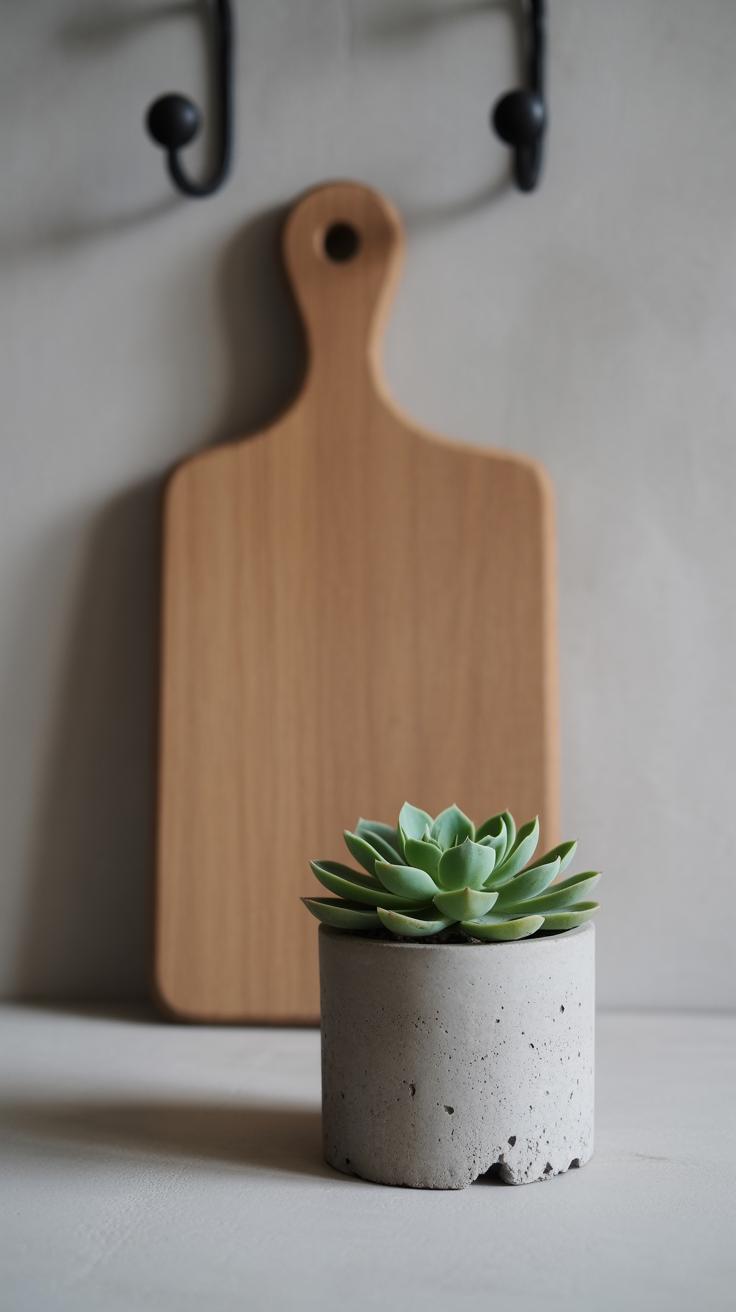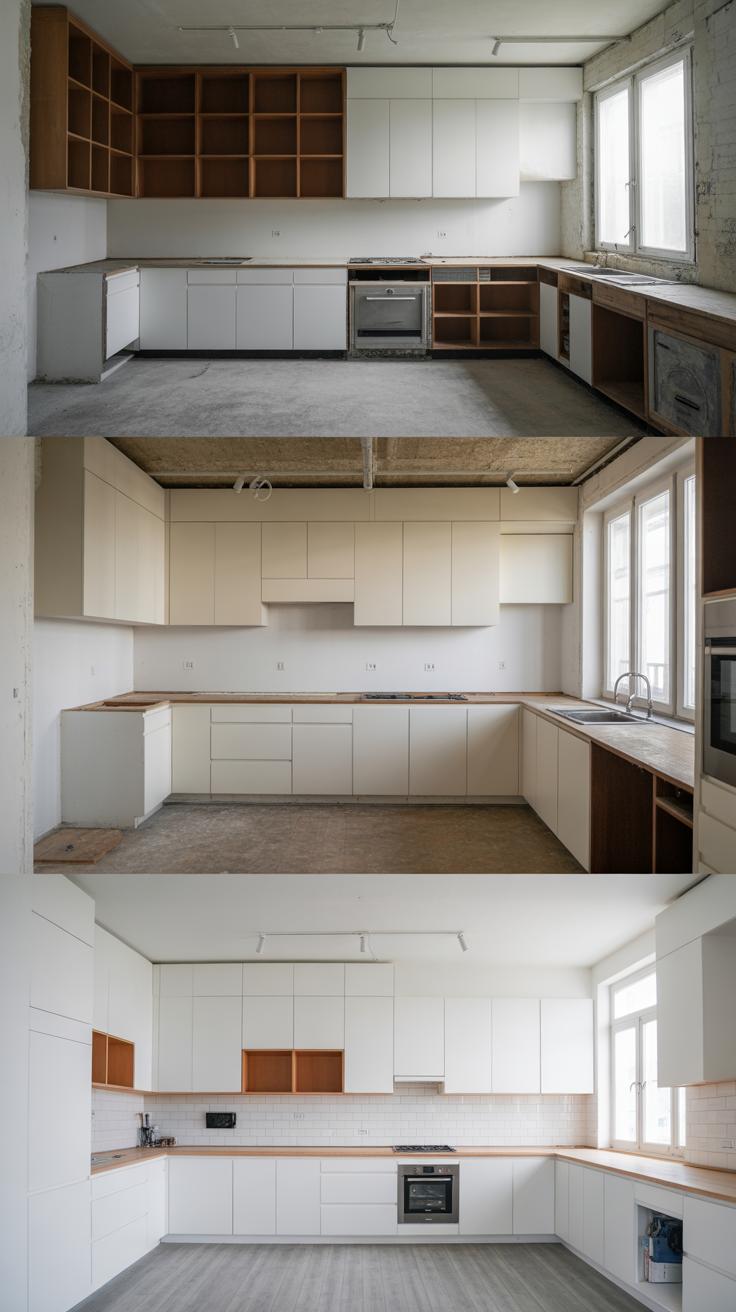Introduction
Minimal kitchen design focuses on creating a calm and streamlined cooking space. This approach reduces clutter and distractions, making it easier for you to focus on cooking and enjoying your kitchen. Minimalism is not just about having fewer items; it’s about choosing the right items that bring function and beauty together.
In this article, you’ll learn practical and actionable ideas to transform your kitchen into a minimalist haven. From selecting simple yet functional furniture to organizing your kitchen tools efficiently, these ideas will help you create a kitchen that feels peaceful and is easy to use every day.
What is Minimal Kitchen Design
Minimal kitchen design is about keeping things simple—really simple. It focuses on creating a space where everything has a purpose and unnecessary items are kept out of sight. Unlike more traditional or ornate kitchen styles that might pile on decorative elements, minimal kitchens stick to clean lines and clear surfaces.
It’s less about just looking neat and more about feeling calm when you step inside. You won’t find cluttered countertops or oversized handles here. Instead, think of smooth cabinetry faces, hidden storage, and an emphasis on function without noise.
Compared to other styles, minimal kitchens don’t invite excess. There’s a deliberate shrinking of visual noise, which, if you ask me, can be surprisingly challenging but rewarding.
Key Features of a Minimal Kitchen
When you picture a minimal kitchen, some features stand out:
- Neutral color schemes, like soft whites, light greys, or muted beige tones
- Countertops clear of gadgets and knick-knacks, letting the space breathe
- Simple, flat-front cabinetry without ornate details or visible hardware
- Integrated appliances that blend into the cabinetry rather than stand out
- Smart storage solutions keeping everything tucked away but easily reached
These aren’t mere trends, but rather essential aspects that give minimal kitchens their unmistakably calm feel.
Benefits of Minimal Kitchen Design
Living with a minimal kitchen offers some practical perks you might not expect. First, cleaning becomes less daunting. Fewer surfaces piled with stuff mean fewer things to dust and wipe down.
Organization naturally improves too—you’re forced to rethink what you actually need on hand, which often means less stress when cooking. And yes, there really is a peacefulness that comes from not seeing chaos everywhere you look. I’ve noticed that mornings in a tidy, minimalist kitchen somehow just start better, though maybe that’s just me.
But here’s a slight twist: some people find the lack of visible tools makes the kitchen feel almost antiseptic or cold. It’s a balance, and really depends on how you use the space and your comfort level with bare surfaces.
Choosing the Right Colors and Materials
Neutral Color Palettes for Calm
When picking colors for a minimal kitchen, sticking to neutrals usually helps keep things calm. Whites, beiges, and grays create an open feeling without overwhelming the space. Soft pastels can work too, but only if they’re subtle—think pale blue or muted pink rather than anything too bright.
These shades don’t just look clean; they also encourage a slower pace. You might notice how stepping into a kitchen painted in soft gray feels less distracting than one with bold colors. On the other hand, some people find too much white cold or sterile, so layering textures becomes the trick.
Materials that Blend Function and Style
Natural materials bring in an unexpected warmth that minimal design sometimes lacks. Wood is great for this—used in cabinetry or even flooring, it adds softness without clutter. Stone surfaces, like a simple marble countertop or a subtle granite, offer a tactile contrast but remain simple in form.
Metal accents, such as brushed steel handles or light fixtures, add a slight edge. They can feel cold if overused, so pairing them with wood or stone balances things out. The goal is to choose materials that serve your kitchen’s practical needs but also keep the look approachable. You want the space to feel intentional, not stripped down to the point of feeling empty.
Furniture Choices for Minimal Kitchens
Simple and Functional Cabinets
Choosing cabinets for a minimal kitchen means focusing on clean lines and subtle details. Cabinets with hidden or handleless designs keep the surface smooth and uncluttered. You might find yourself appreciating how these styles avoid visual noise—no protruding metal or awkward knobs disrupting the calm. Flat-front doors, for example, work well here. They look tidy and make wiping down surfaces easier, which is a real plus when you want quick cleanup.
But, I do wonder if completely handleless cabinets might feel a bit too cold or clinical for some people. Maybe adding a slight texture or a matte finish could soften that impression. Still, cabinetry that doesn’t invite fidgeting with handles somehow makes the whole space feel more organized, as if everything has its place—even if that’s just a small mental reassurance while cooking.
Open Shelving and its Uses
Open shelves offer a chance to display everyday items without bulk. They encourage you to keep only what you truly need and use often right within sight. Seeing your essential dishes or glassware can actually prompt you to keep them organized—less hiding, more order.
On the flip side, open shelving demands some discipline. If you’re not careful, it can become a catch-all for clutter rather quickly. Still, if you select shelves made of light wood or metal frames, they blend well with neutral tones and help keep a kitchen feeling airy and open. Some people might hesitate to expose their mess, but I think open shelves also make you think twice before leaving things out.
Have you considered how displaying just a few carefully chosen bowls or jars could transform how you view your kitchen daily? It might even make cooking feel a bit more intentional, not token décor but part of your routine.
Smart Storage Solutions to Reduce Clutter
Keeping a kitchen calm and streamlined often means hiding the mess without making things hard to reach. Drawer dividers come in handy here. They let you separate utensils, gadgets, and even those random kitchen tools you’ve collected over time. When everything has its spot, you’re less likely to rummage around, making cooking feel less chaotic. I once tried a drawer without dividers—it was a nightmare.
Pull-out shelves are another trick that I think gets overlooked. Instead of digging deep in cabinets and pulling out half the contents, these shelves slide out fully, revealing everything at once. You’ll find that you use what you have more because you can see it, which means fewer duplicates piling up.
And for vertical storage, wall space is often wasted, which feels like a big mistake when countertops get cluttered quickly. Hooks can hold pots, pans, or mugs in plain sight but keep them off surfaces. Magnetic strips for knives or spice jars offer easy access and clear up drawers and counters alike. It’s surprising how freeing just freeing up a little counter room can feel.
Appliance Selection and Placement
When it comes to picking appliances for a minimal kitchen, less really can be more. You want to focus on essentials that fit your cooking style without crowding the space. Think about which appliances you use daily and which ones tend to just take up room. Choosing compact models helps—tall, bulky machines often dominate counters and make everything feel cluttered.
It’s also smart to lean toward multipurpose appliances. For example, a toaster oven that bakes and broils can replace a separate oven and toaster. Or a blender that doubles as a food processor reduces the number of gadgets you need. A minimalist appliance usually has clean lines, a neutral color, and avoids unnecessary buttons or flashy designs. I’ve had decent luck with brands that focus on simple aesthetics and slimmer footprints.
Placement changes everything, really. Appliances used most should be easy to reach but not just out in the open. Try to keep countertops clear by tucking less-used machines into cabinets or drawers with outlets, if possible. The microwave might go above the stove, the coffee maker near a power source but off to the side, and frequently used tools closer to prep areas. This avoids a jumble and keeps your cooking flow from stalling. You want to move around with ease, not zigzag around stuff.
Have you thought about which gadgets truly fit your routine? Sometimes cutting down on devices feels limiting at first, but then the kitchen feels calmer, somehow more inviting. It’s a balance, I guess—between enough convenience and not too much stuff underfoot.
Lighting to Enhance Minimal Kitchen Mood
Light shapes the entire atmosphere of a minimal kitchen. Natural light brings a gentle sense of openness that artificial lighting sometimes can’t fully mimic. When daylight streams in, even the simplest kitchen feels warmer and more inviting. But this doesn’t mean you need huge windows everywhere. Sometimes, a well-placed source of natural light can be enough—especially when it’s amplified with thoughtful details.
Maximizing Natural Light
Using light, sheer curtains is a subtle way to keep brightness without losing privacy. They soften harsh sunlight and prevent your kitchen from feeling cold or sterile. You might try reflective surfaces too—like a polished backsplash or pale countertops that bounce light around the room. Mirrors can work, but cautiously—I’ve seen kitchens where too many reflective surfaces create a bit of a dizzying effect.
Think about the placement of furniture and appliances as well. Keeping taller items away from windows can help light flow freely. And if your kitchen layout limits natural light, using light-toned walls and minimal window treatments can make a difference. Natural light isn’t just about brightness; it affects mood subtly, so even small efforts to enhance it feel worth trying.
Simple Lighting Fixtures
When daylight fades, your artificial lighting picks up the slack. Minimalist fixtures should blend in rather than shout. Picture slim pendant lights over an island or a single, understated ceiling fixture that offers enough brightness without clutter. Metals like brushed nickel or matte black often work well—they add a slight design element without overpowering the space.
Don’t forget layering light: a combination of ambient lighting with focused task lights can serve functionality without filling the room with too many objects. Under-cabinet lights are a smart choice, tucked out of sight yet illuminating prep areas clearly. I find that avoiding overly ornate or bulky fixtures keeps the kitchen feeling light and uncluttered—sometimes less really is more, at least when it comes to kitchen lighting.
Decor Items that Fit Minimalist Kitchens
Choosing decor for a minimal kitchen feels like walking a tightrope—you want personality without tipping into clutter. It’s tempting to add a few more things here and there, but restraint pays off more. Think about pieces that do double duty, or those that bring subtle warmth without shouting for attention.
Plants are perfect for this. A small potted herb, like rosemary or thyme, sits nicely on a windowsill and brightens the space. They add life but remain quiet and unobtrusive. Their green tones contrast gently with neutral cabinetry, and yes, they even smell nice when you’re cooking. That little extra connection to nature can make a kitchen feel calmer, like it’s breathing with you.
Simple artwork also works well—but keep it minimal. A single framed print or an abstract watercolour hung on a blank wall offers personality, without crowding. Think about pieces that echo your kitchen’s color palette, or that bring subtle texture. When I first hung a small black-and-white sketch near my counter, it made the space feel more human—like a quiet nod without being intrusive.
Functional decor often gets overlooked, but it’s quite powerful. Stylish storage jars, for example, keep your ingredients organized and visually tidy. Clear glass or matte ceramic containers with uniform shapes reduce chaos on open shelves. Wooden cutting boards resting against the backsplash add warmth and texture, while remaining useful. Even kitchen towels with simple patterns can bring softness without noise.
If you choose carefully, these pieces create a kitchen that feels lived-in, not barren. They invite calm and order, but without sacrificing character. Maybe that’s the trick: decor that whispers, not shouts.
Maintaining Your Minimal Kitchen
Keeping a minimal kitchen neat day-to-day means more than just quick cleanups. It’s about forming small but steady habits that stop mess before it starts. For example, wiping counters right after cooking can prevent stubborn stains and crumbs piling up. You might feel tempted to push it off till later, but doing it immediately usually saves time in the long run.
Try these simple routines:
- Wash or rinse dishes as soon as you’re done with them instead of stacking them in the sink.
- Use a damp cloth to clear crumbs or spills from surfaces every evening.
- Keep a small basket or tray for frequently used items, so they aren’t scattered around.
When it comes to decluttering, I find it helpful to schedule a quick check every few weeks. Ask yourself: “Have I used this utensil or gadget recently?” If the answer is no, consider donating or storing it away. It’s easy to let rarely used tools linger, but they add visual noise and take up space that could remain open and calm.
Regular checks don’t have to be overwhelming. Maybe twice a month, spend five to ten minutes pulling out and assessing drawers or cupboards. You may discover things forgotten or duplicates that aren’t really necessary.
Do you find it hard to decide what stays and what goes? Try picturing your ideal kitchen day — which items play a part, which just add clutter? This mental exercise makes it easier to identify essentials versus extras you don’t really need.
In the end, maintaining a minimal kitchen is less about perfect order and more about consistent, mindful choices that keep your space feeling open and inviting. It’s a small effort every day that pays off in quiet, clear spaces where cooking feels natural.
Transforming Your Kitchen Step by Step
Starting with Decluttering
Begin by taking a hard look at everything in your kitchen. Yes, it can be overwhelming, but tackling it bit by bit helps. Pull out items you rarely use, duplicates, or those that simply don’t belong. You might be surprised by how many things have quietly piled up over time. I found myself keeping baking tools I hadn’t touched in years, probably out of habit or hope I’d use them someday.
Organizing what’s left is just as crucial. Group essentials by how often you use them—daily staples close at hand, occasional appliances tucked away. Use clear containers or drawer dividers where possible; it’s easier to keep tidy when you can see everything clearly.
Ask yourself, do I need three spatulas? Maybe only one or two. This process may feel slow, and maybe your kitchen won’t look minimal immediately. But small steps are better than none at all.
Updating Style and Storage Gradually
Once you clear the clutter, start thinking about your kitchen’s style and storage—but take your time. Swapping out bulky or outdated furniture first can open up space. A slim, clean-lined table or stools might make a difference without a full overhaul.
Replacing appliances is another step to consider—but not all at once. Perhaps upgrade one essential, like your stove or fridge, to a more minimal design that blends in quietly. I’ve noticed that even small changes, like a simple matte finish kettle, can shift the room’s mood profoundly.
Introduce minimal decor sparingly. Maybe a single plant or a neatly framed print. Avoid rushing to fill empty spaces; sometimes leaving things bare feels more peaceful. Over time, you can refine and adapt as your tastes settle or needs change—but starting slow keeps the process manageable and less stressful.
Conclusions
The ideas shared here offer a way to rethink your kitchen space. By simplifying your choices and focusing on utility, you can create a kitchen that works well for you. A minimal kitchen does not only look clean but also supports calmness and enjoyment during your cooking.
You can start small by removing unnecessary items and choosing quality pieces that serve multiple purposes. Remember, a minimal kitchen is a personal space shaped by your needs. Take these ideas and adapt them to build a cooking space that brings you peace and order.

